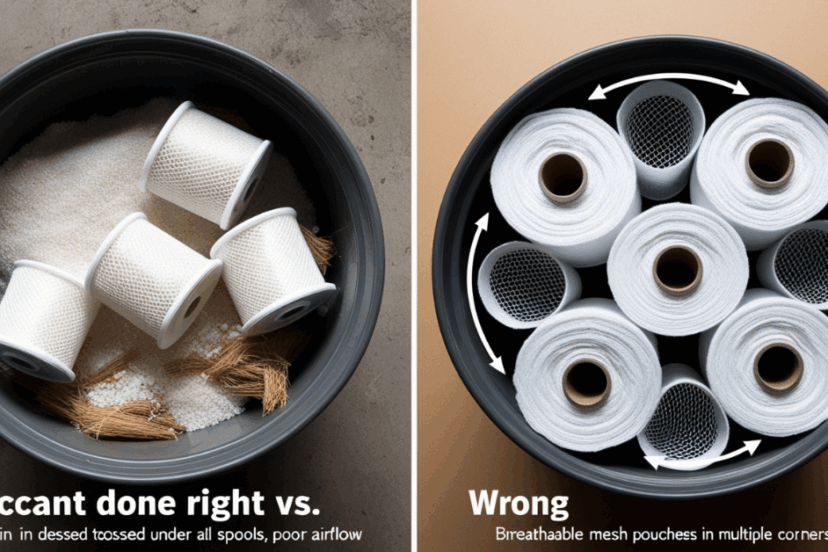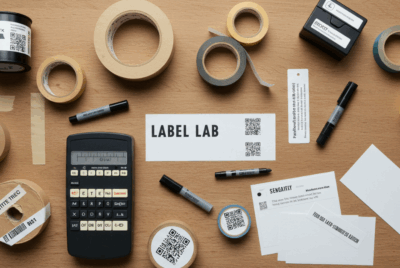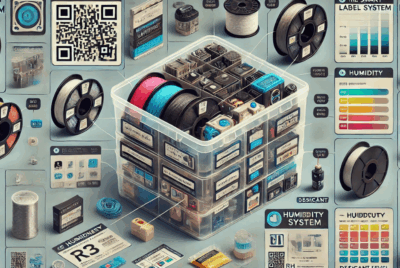How Do Desiccant Placement and Airflow Affect Container Efficiency?
1. Introduction: Desiccant Isn’t Magic—It’s Strategy
Throwing a silica packet in your filament container and calling it a day?
That’s like dropping a fan in a room and expecting climate control.
Placement and airflow matter. A lot.
If your filament is still absorbing moisture, chances are…
it’s not the desiccant’s fault—it’s the way you’re using it.
2. Why Desiccant Matters for Filament Storage
3D printing filament is hygroscopic. It sucks moisture out of the air, even through small
leaks.
Desiccant helps by:
✅ Absorbing water vapor
✅ Lowering the relative humidity (RH) inside containers
✅ Preserving filament quality over time
✅ Reducing drying frequency
But it’s only as good as where you place it and how air moves around it.
3. How Desiccant Works
Desiccants (like silica gel) contain materials that bind to water molecules.
They work best when:
- Air can flow through or around them
- The container is sealed
- They are distributed near moisture entry points
Think of desiccant like a sponge: it needs to be exposed to catch anything.
4. Common Desiccant Mistakes Makers Make
❌ Tossing one tiny silica packet in a big bin
❌ Burying desiccant under filament spools
❌ Not replacing or recharging packs regularly
❌ Blocking airflow with foam or dividers
❌ Relying on desiccant alone in a non-airtight container
These reduce effectiveness by up to 50% or more.
5. Best Types of Desiccant for 3D Filament
| Type | Pros | Best Use |
|---|---|---|
| Silica gel packs | Cheap, reusable | Small containers |
| Rechargeable canisters | Long life, visible | Larger bins |
| Desiccant tubs | High capacity | Multi-spool containers |
| DIY calcium chloride pouches | Super absorbent | Not for airtight bins (creates liquid) |
| Humidity control packs (e.g. Boveda) | Precise RH control | Specialty materials |
Color-changing silica = great for visual RH tracking.
6. How Much Desiccant Do You Actually Need?
A good rule of thumb:
- 25–50g per spool in a container
- 100g per 20–30 quarts of container volume
- 150g+ for large 40–50 qt bins or humid areas
Too little = won’t dry effectively
Too much = waste of money, but no downside
7. Why Placement Affects Performance
Desiccant needs to:
- Be exposed to air (not trapped)
- Be near air gaps or the container opening
- Allow circulation so moisture migrates toward it
If airflow is blocked, the RH inside the bin won’t equalize well, and parts of the container will remain moisture pockets.
8. The Ideal Desiccant Placement Inside Storage Containers
| Container Type | Best Placement |
|---|---|
| Airtight bin | Opposite side of the lid seam |
| Vacuum bag | In a mesh pouch on one side |
| Dry box | On bottom, not touching filament |
| Pet food bin | In corner or clipped to lid |
| Cereal container | Near base or lid cap with airflow |
💡 Avoid placing it under foam, behind spools, or in sealed zip pouches.
9. Should Desiccant Touch the Filament?
Generally, no.
- It can leave dust or residue on the filament
- It reduces airflow to the pack
- It can scratch or dent filament if in a hard canister
Use small trays, cups, or mesh bags to keep it separate and breathable.
10. Using Airflow to Improve Moisture Control
Airflow helps distribute moisture so desiccants can do their job.
How to encourage airflow:
- Leave space between spools
- Use containers with even height and minimal ridges
- Store containers in stable temperature zones
- Open bins only when needed
Don’t seal off the RH—circulate it within the bin so desiccants can catch it.
11. Desiccant in Vacuum Bags vs. Airtight Bins
| Feature | Vacuum Bag | Airtight Bin |
|---|---|---|
| Desiccant movement | Limited | Freer airflow |
| Best placement | Flat against side | Open cup or corner |
| RH fluctuation | Very low | Slight variation |
| Monitoring | Harder | Easier with cards/sensors |
In bags, pack tight. In bins, let desiccants breathe.
12. Do Silica Packs Work Better on the Bottom or Top?
Depends on your container’s air movement.
✅ Bottom: Moisture is heavier, and it collects at the base
✅ Top: If heat rises (e.g. during printing), moisture may follow
Best setup? One in the bottom + one near the lid for full coverage.
13. Humidity Monitoring and Placement Synergy
Track RH properly by placing:
- Humidity cards mid-bin, where air is least disturbed
- Digital sensors near filament, but not touching it
- Bluetooth trackers near the top, where airflow fluctuates
If your RH won’t drop—even with silica—you may need to reposition or add more packs.
14. How to Recharge Desiccants Without Losing Efficiency
- Most silica packs: bake at 250°F (120°C) for 2–3 hours
- Rechargeable tubs: Follow brand instructions
- Avoid moisture buildup during recharging
- Rotate packs to avoid always using the same one
Don’t forget to check color—orange turning green or blue to pink means it’s time.
15. Final Thoughts: Small Tweaks, Big Results
Desiccants are essential, but they’re not magic.
To make them work:
✅ Use enough
✅ Place them wisely
✅ Encourage airflow
✅ Monitor with RH tools
✅ Keep containers tightly sealed
A \$5 silica pack in the right spot can save you hours of failed prints and wasted filament.
❓FAQs
- How many desiccant packs do I need for a 30 Qt bin?
Use 100–150g of silica gel total. You can split this across 2–3 packs for better distribution. - Can I throw a desiccant pack under the spools?
You can—but it’s better to place it where air moves freely (like corners or in a mesh holder). - Should I use a fan inside my bin for airflow?
Not needed for sealed bins. Just ensure your storage isn’t too cramped, and air can circulate. - Do desiccants expire?
They don’t “expire,” but they get saturated. Recharge or replace when the color changes or RH stays high. - Can I stack spools tightly in an airtight bin?
Yes—but leave small gaps between them, and don’t block desiccants or sensors.




